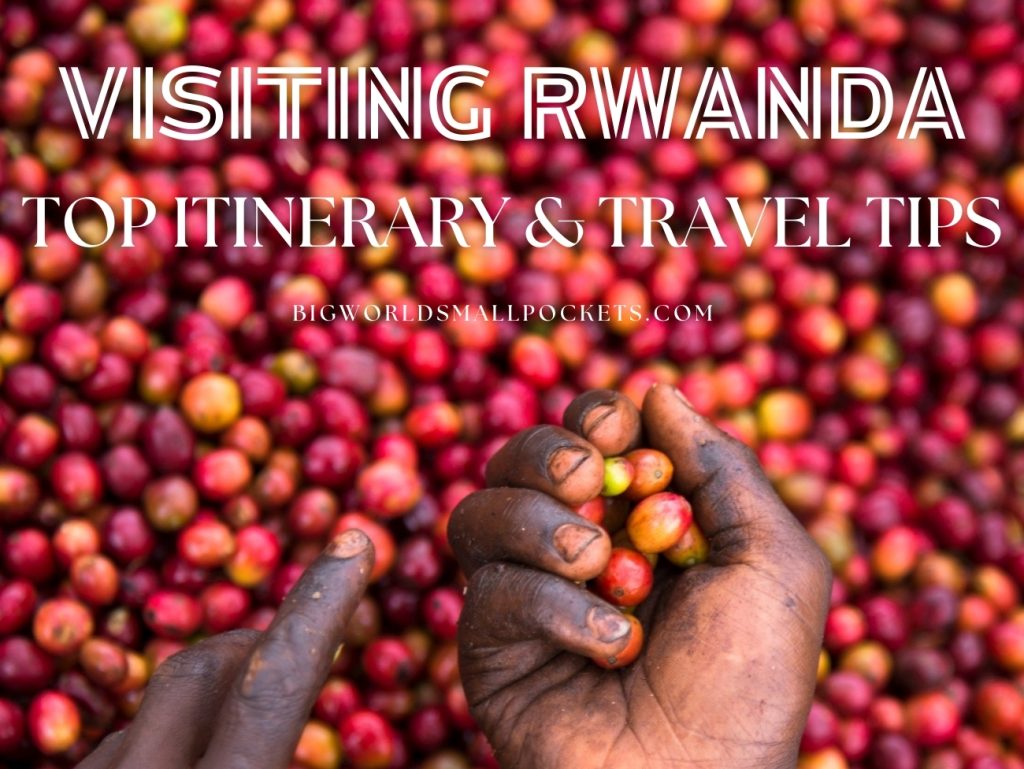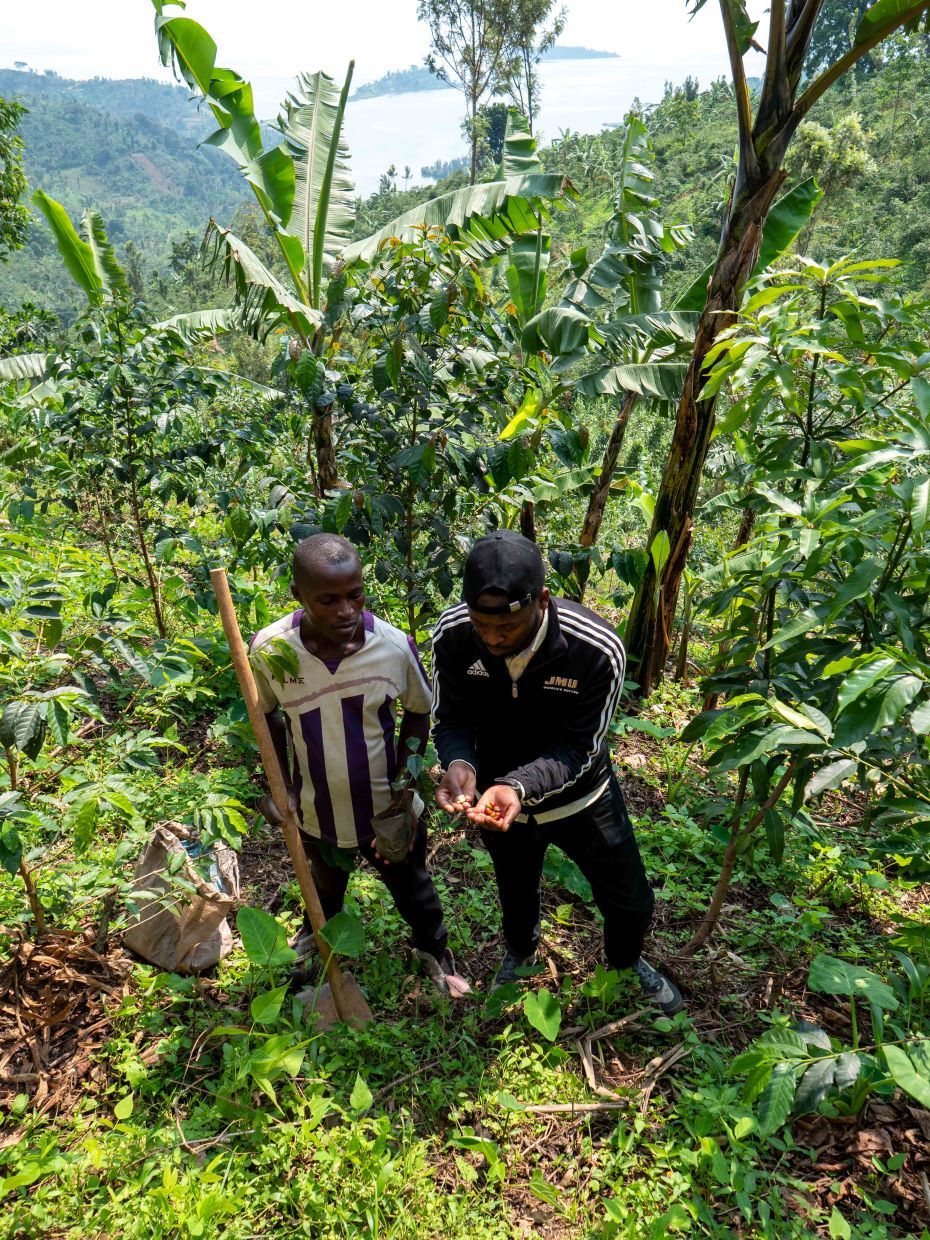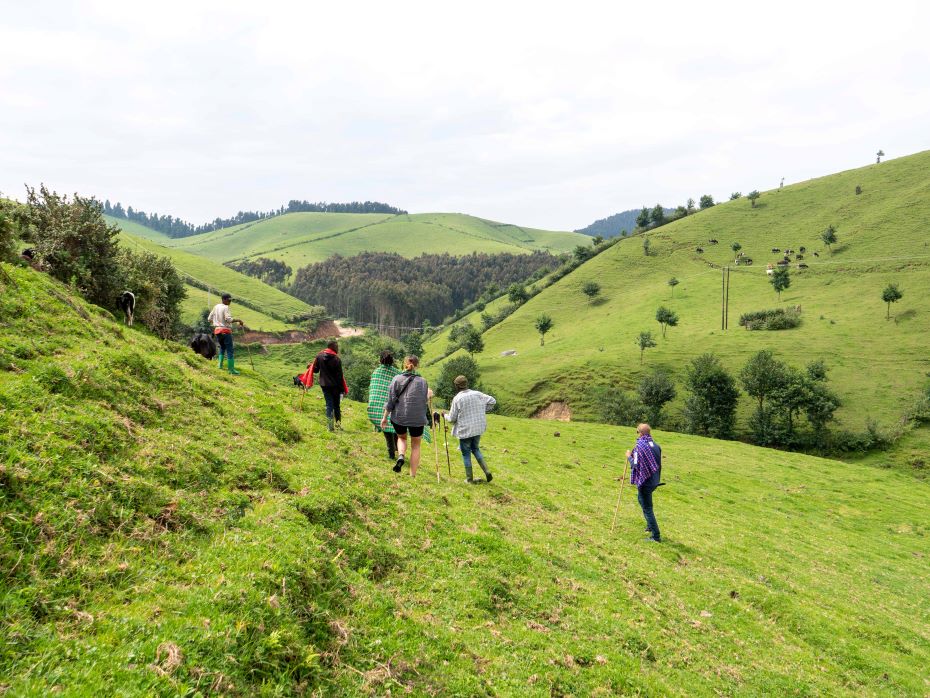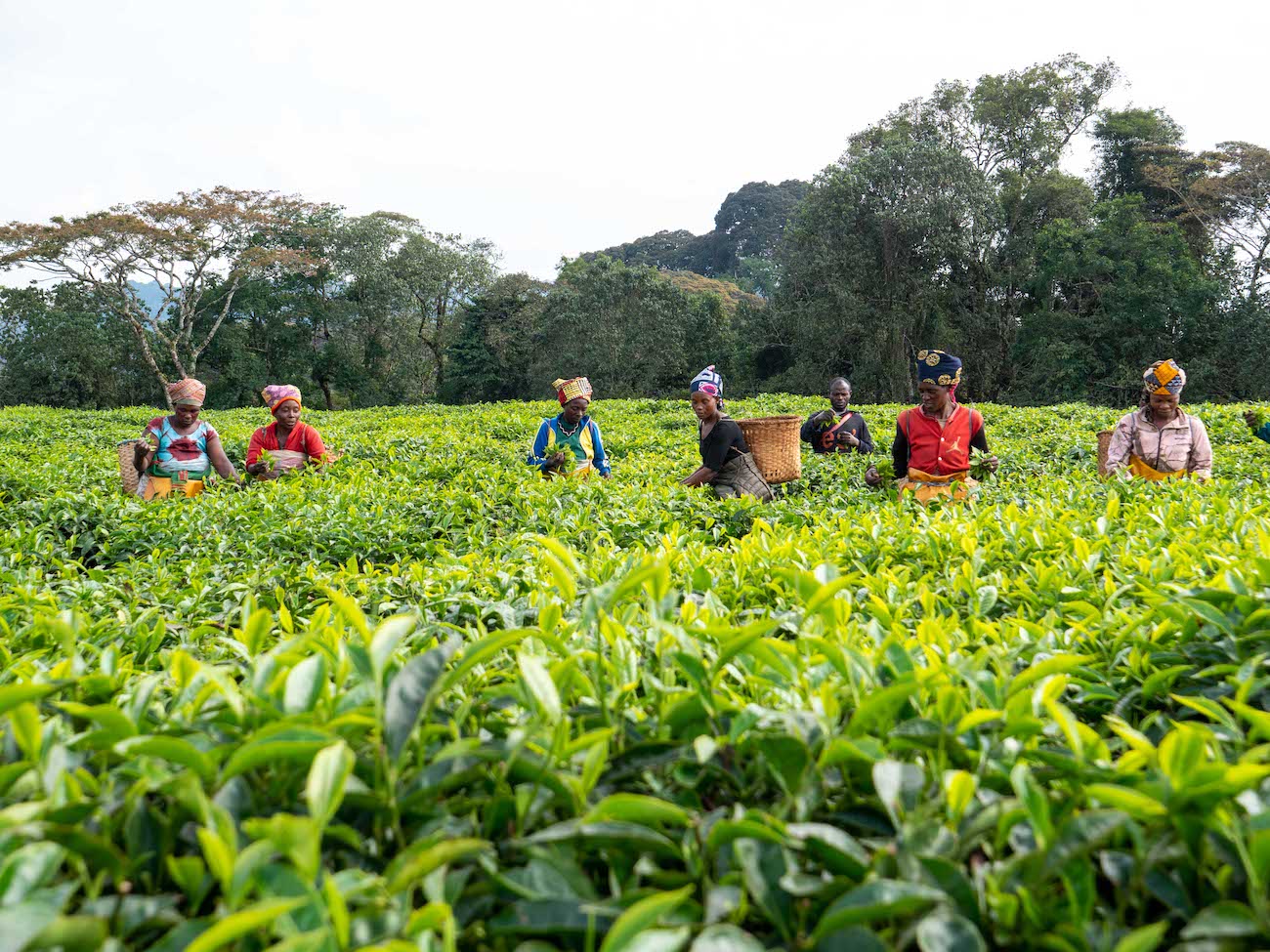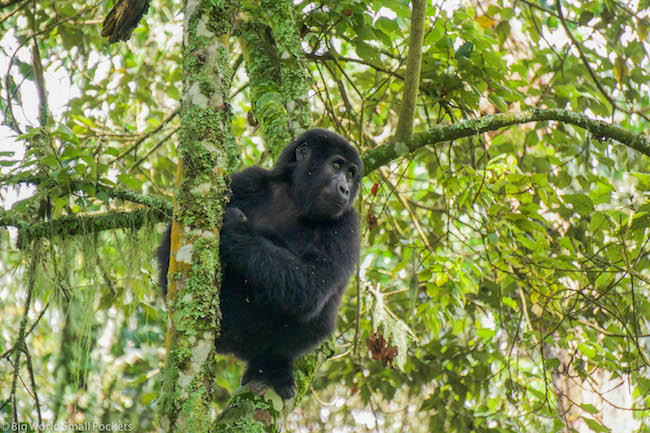I think it’s fair to say that visiting Rwanda is not something many people get to do in their lifetimes.
A small country in east Africa, I know only a handful of people that have travelled here, which means getting information about what it’s like adventuring in this off the beaten track destination isn’t always easy.
But enter this handy guide I wrote all about that visiting Rwanda, with the key travel tips, plus the 1 week itinerary, you need to have the best, safest and most enjoyable time here.
Because, nestled in the heart of Africa, Rwanda is unlike any other country on the continent. I absolutely loved my time here.
With rich soils, evergreen landscapes, and rolling hills, it’s poised as a true African oasis and known as the Land of a Thousand Hills.
Considering the country is a similar size to Wales, it offers a great diversity of culture, flora, and fauna just waiting to be experienced.
Here’s the key things you need to know before visiting Rwanda…
Related Posts
When to Visit Rwanda?
The best time to visit Rwanda is during the months of June, July and August.
This is when the country experiences its longest dry season, which means sightseeing, getting around the country and viewing its wildlife easiest.
In particular, it’s the easiest time to see the gorillas, which is a major reason many people want to visit Rwanda in the first place.
The only reasons not to visit Rwanda between June and August are that the country will be the most crowded at this time and you may struggle to get a gorilla permit.
The dry season is also a hard time to see the country’s chimpanzee population.
This isn’t based on permits but rather the fact that, during the dry season, the chimps move deeper into the forest to seek food, which means hiking to them and tracking them is much more difficult.
If you’re coming to Rwanda primarily to see chimpanzees, then the best time to visit is actually to visit during the rains of October and November or March, April and May.
How to Get There?
Most people arrive into Rwanda via the country’s international airport in the capital Kigali.
Check Skyscanner for the best rates.
Airport taxis and private transfers are both available to shuttle you the 1km from the airport to the city centre.
Alternatively, you can also cross overland into Rwanda from several neighbouring countries.
The safest and most popular routes are from Tanzania and Uganda.
As always, please check visa requirements and border security before planning any overland crossings.
How Long to Spend There?
I highly recommend a stay of 1 week in Rwanda.
Although a small country, there’s a heck of a lot to do here and 2 of the main attractions – hiking to see the gorillas and chimpanzees – are full day activities that involve some time, logistics and planning.
Rwanda has good road infrastructure, but you still want to ensure you have enough time to not only travel between destinations in the country, but enjoy them too.
7 days is a good amount of time to do this.
1 Week Rwanda Itinerary
And with 7 days in mind, I’m now going to bring you my perfect 1 week itinerary.
The only guide you need to plan your visit to Rwanda, this itinerary covers all the main highlights and makes for an unforgettable adventure…
Day 1 – Kigali
Most travellers flying into Rwanda will arrive at Kigali International airport.
During the drive into the city, you will quickly realise that the capital is impeccably clean, with greenery everywhere.
Visitors should spend at least one day in Kigali to experience the capital and understand its history and culture.
A walking tour around the old part of the city, ‘Nyamirambo’, includes a visit to the local women’s centre, the popular milk bars, and a local fresh produce market to absorb the regional sights and smells!
No visit to Kigali is complete without experiencing the sombre Kigali Genocide Memorial.
The Rwandan genocide started in April 1994 and resulted in the shocking death of more than 1 million people.
The memorial acts as a stark reminder to visitors of this very recent tragedy, and the grounds are the final resting place for more than 250,000 Rwandans.
Day 2 – Inyambo
The King’s Palace in Nyanza is another Rwandan must-see.
Visitors can take a tour around a reconstructed version of the King’s living quarters, which comprises beautifully crafted straw huts.
Yet, the real highlight of the tour must be the Inyambo.
Inyambo is Rwandan royal or sacred cows, they are spectacular long-horned beasts with big personalities.
After being formally introduced to the cows, visitors can get up close and personal with these magnificent animals to groom them.
Day 3 – Nyungwe Forest
Nyungwe Forest is one of the oldest forests in Africa, and you really can’t plan on visiting Rwanda and not including this spot in your itinerary.
The whole area offers a deep sense of peace and tranquillity, and the Canopy Walk provides a unique perspective to view the landscape.
Colobus and Blue Monkeys are the most common primates to stumble across on this route, but chimpanzees are also around!
The suspended canopy bridge showcases the lush greenery of the forest floor below and the impressive canopy which is seemingly endless.
It extends as far as the eye can see, and mist mottles from the constant downpours of the wet season, giving the place an air of mystery and enchantment.
The forest is also surrounded by local tea plantations, and travellers can gear up with aprons and baskets to lend a hand to workers.
Tea picking is an art in Rwanda, and both men and women enter the fields every day to earn a fair wage.
Day 4 – The Congo Nile Trail
Mountain biking part, or all, of the Congo Nile Trail is a must for adrenaline-junky travellers.
The full trail is around 160 miles and takes five days complete, so it isn’t for the faint-hearted.
The trail and terrain are challenging, but the downhill segments more than make up for the uphill struggles.
Travellers can come across groups of local children and explore vast expanses of rice terraces and pine forests and, along the way, bikers can also stop into a local coffee cooperative to learn all about delicious Rwandan coffee.
You can even plant your own coffee plant and generally enjoy a caffeine-fuelled pit stop – yes please!
Day 5 – Rubavu
In the foothills of Bigogwe, visitors can find themselves somewhere that looks more at home in the Irish countryside than in Africa as rolling green-grass hills are visible, dotted with herds of black and white cows.
Travellers can join local dairy farmer, Ngabo Karegeya (who describes himself as a certified cowboy) to learn about the huge milk culture in Rwanda.
Here, animals roam freely and get milked by hand every day, visitors can even become honorary milkmaids for an afternoon!
The farmers stay with the cows around the clock so, they created their own entertainment.
High jump is a popular game, where participants stick their staffs in the ground and see who can jump over them without falling over.
Day 6 – Meeting the Gorillas
Perhaps the biggest itinerary highlight when visiting Rwanda is meeting the Mountain Gorillas – a truly once-in-a-lifetime experience.
Travellers can expect a 6am start at Volcanoes National Park, which begins with a comprehensive safety briefing.
These animals could easily kill a human in one quick movement so safety for both species is essential.
The gorillas here have pushed and kicked people if they get too close or if they take a disliking to a person, so make sure you pay attention to the briefing to keep yourself, and these amazing creatures, safe.
With several groups departing daily, travellers can visit one of 10 habituated gorilla families in the park.
Some are within a 30-minute walk, and others, a 4-hour hike.
Armed trackers accompany every group for the protection of the gorillas and visitors.
Visitors currently need to wear masks, as a group of gorillas in the park was unfortunate enough to catch COVID-19.
Then, after as little as 30 minutes, visitors find themselves in front of these beautiful animals.
The large silverback males are enormous, and the whole family are often sitting chomping on bamboo.
The stark resemblance between gorillas and humans quickly becomes clear in their presence.
The guides advise travellers to spend the first 30 minutes taking pictures and getting videos.
If you’re lucky, you may even get a close-up encounter with a baby gorilla that takes an interest in fluffy camera microphones!
You should spend the last 30 minutes sitting in the grass and observing the everyday lives of these bewildering creatures.
Some are napping, some are eating bamboo, and all the youngsters are playing, chasing, hitting and biting one another – much like human siblings.
One important thing to note about seeing the gorillas in Rwanda is the price tag attached to the experience.
It costs $1,500 USD per person, per day to see them, which isn’t a small amount.
But, it’s 100% worth the money and a truly once-in-a-lifetime opportunity, that helps to support the conservation of this important forest and the mountain gorillas who live here.
When leaving the park, visitors can opt to stop at the Ellen DeGeneres Campus of the Dian Fossey Gorilla Fund.
The campus has all the information anybody could want about the gorillas of Rwanda and learn all about Dian Fossey’s work with the animals.
From visiting the plantations and seeing the vast green landscapes to experiencing the people and culture, this six-day itinerary provides everything a traveller needs to gain a true overview of Rwandan life.
Day 7 – Depart
Sadly it’s time to make your way back to Kigali and depart on day 7, but no doubt you will have had an amazing time visiting Rwanda.
Just enter your details below and I'll email it you - simple!
Information will be sent to the email provided above
Mini Travel Guide to Rwanda
Health & Travel Insurance for Rwanda
Always check with a medical professional any requirements you might have before visiting Rwanda.
This includes ensuring your vaccinations are up to date and preparing any anti-malaria medication you might need.
World Nomads offers simple and flexible travel insurance. Buy at home or while travelling and claim online from anywhere in the world.
Alternatively, if you’re a long-term traveller, digital nomad or frequent remote worker seeking travel health cover, check out Safetywing’s Nomad Insurance policies.
Accessing and Spending Money in Rwanda
The local currency is the Rwandan Franc. USD are also widely used and accepted.
I suggest bringing USD cash with you, as well as a good travel money card you can use in Visa and Mastercard ATMs and card machines.
The easy way to spend abroad with real exchange rates, no markups and no sneaky transaction fees, I always travel with my Wise card.
It works just like a debit card… and it links easily with Google and Apple pay – sold!
Grab yours here.
Tours vs Independent Travel
Rwanda is a stable country and safe to travel independently if you apply common sense and precautions as you would anywhere in the world.
I visited as a solo female traveller and felt very safe throughout my time there.
However many visitors do prefer to take a tour of the country – it is certainly easier to ensure you get your gorilla permits this way.
Check out these fab tours if you do want to see Rwanda with a guide.
Key Packing Items for Rwanda
- Good Camera – You’ll definitely want a great camera to capture all the amazing sights on Rwanda.
- Headlamp – Power cuts can happen in Rwanda and have in a trusty headlamp so you can navigate you’re way when this does happen (or you’re out camping) is a must!
- Portable Charger – A portable charger so you can recharge your phone, camera or Bluetooth headphones.
- Insect Repellent – A necessity for when you travel in east Africa, to keep the mosquitos and other biting insects at bay.
- Hiking Boots – Definitely needed if you’re hiking to see any primates in Rwanda.
Rwanda eSIM
I recommend Holafly.
Get 5% off with my exclusive discount code: BIGWORLDSMALLPOCKETS.
SAVE THIS ARTICLE TO PINTEREST!
So there you have it, my list of the top tips and best itinerary you need when visiting Rwanda.
Are you planning to visit this wonderful east African country?
Have any questions about travelling here?
Then drop them into the comments below and I’ll get back to you…
This page contains affiliate links meaning Big World Small Pockets may receive a small commission on any purchases at no extra cost to you.

